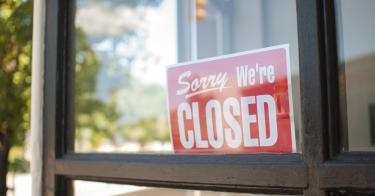Canceled flights, unopened community pools, delayed deliveries, overcrowded emergency rooms and reduced public safety are all consequences of the unprecedented U.S. labor shortage.
There are 50% more job openings today than at any time before the pandemic. The unemployment rate is near a half-century low.
So how did that happen? A combination of government policies that simultaneously reduced the supply of workers and stimulated demand for goods and services.
Workers fled the job market thanks to policy decisions, such as 18 months of bonus unemployment benefits that meant many could make more money staying on the sidelines than by working. Meanwhile, Washington stimulated consumer and business demand for goods and services by flooding the economy with trillions of dollars in so-called COVID-19 relief, about half of which was money printed by the Federal Reserve.
>>> What Is Happening in This Unprecedented U.S. Labor Market? July 2022 Update
The result is an unprecedented U.S. labor shortage. There are 755,000 fewer people employed today than at the start of the pandemic, despite an increase of 4.2 million in the population of people ages 16 and older.
If the employment-to-population ratio were the same as in February 2020, prior to the pandemic, 3.3 million more people would be working today. Moreover, economists estimate that a decline in the desired hours of work has roughly doubled the magnitude of the labor force decline.
So, who is no longer working?
To figure that out, I reviewed both published and unpublished data from the Bureau of Labor Statistics Current Population survey to estimate the “employment gap” for various groups of workers. This gap equals the difference between the number of people currently employed and the number who would be employed if the employment-to-population ratio had remained at February 2020 levels.
Contrary to media reports and some politicians’ claims when arguing for new federal entitlement programs, neither women nor parents account for the majority of the employment gap.
Men and women have identical employment gaps, both 2.1% below their pre-pandemic rates.
And parents’ employment gap is half that of nonparents. Multiple economic studies have shed light on this phenomenon, concluding that while parents—and mothers in particular—were more stressed because of school and daycare closures, their employment was not disproportionately affected by it.
The big story is a 9.2% drop in employment among workers ages 65 and older and a 3.0% decline among workers ages 20 to 24. If younger workers were pursuing education, their employment decline would not be troubling, but undergraduate enrollment is down by 9.4% since the pandemic began.
To help increase work among older Americans, policymakers should help enable independent work that can provide a flexible, be-your-own-boss option for older workers. Eliminating Social Security’s retirement earnings test would also encourage more work—simultaneously growing the economy and improving Social Security’s finances.
>>> Apprenticeships, Not College, Can Help Reduce Unemployment
The decline in employment and education among workers ages 20 to 24 is particularly troubling considering that these are prime years for gaining education and experience and establishing effective lifestyle habits.
In addition to ending welfare-without-work programs that can encourage idleness and dependence over productivity and personal autonomy, policymakers should also make it easier for young people to gain education for a successful career without the excessive costs of a college degree.
That includes phasing out federal subsidies that crowd out low- and no-cost alternatives, encouraging—instead of canceling—thriving new Industry Recognized Apprenticeship Programs, and embracing successful employer-provided education and training.
Moreover, policymakers need to address the out-of-control inflation that’s eating away at individuals’ returns to work. While the average full-time worker’s earnings increased by $3,100 over the past year, inflation has eaten away $5,300, leaving him effectively $2,200 poorer.
If left unchecked, the U.S. worker shortage will lead to even higher inflation, reduced incomes, higher taxes and a smaller economy that will hurt all Americans. Policymakers need to expand education alternatives, encourage flexible work, end welfare without work and constrain out-of-control federal spending.
This piece originally appeared in The Washington Times




